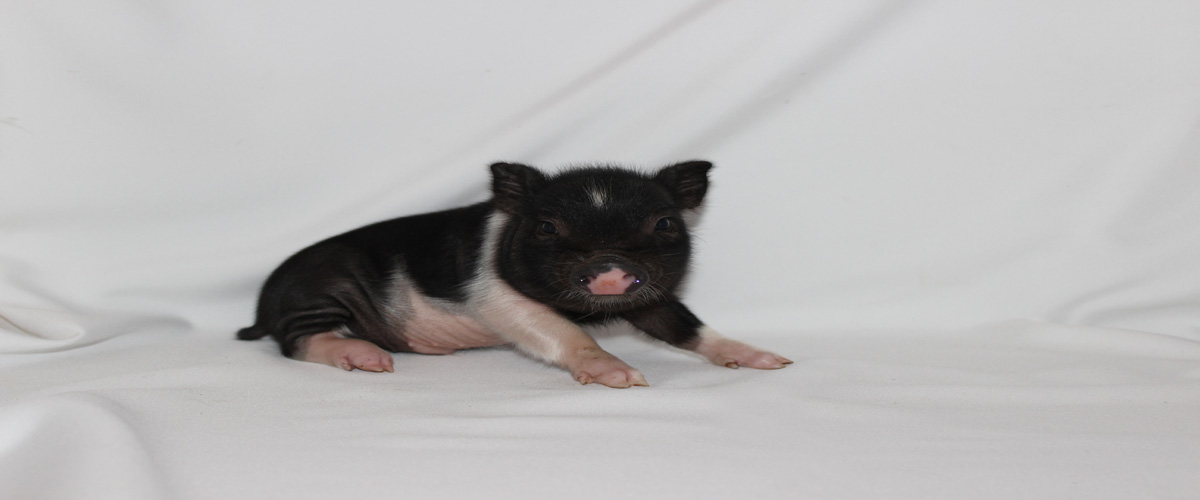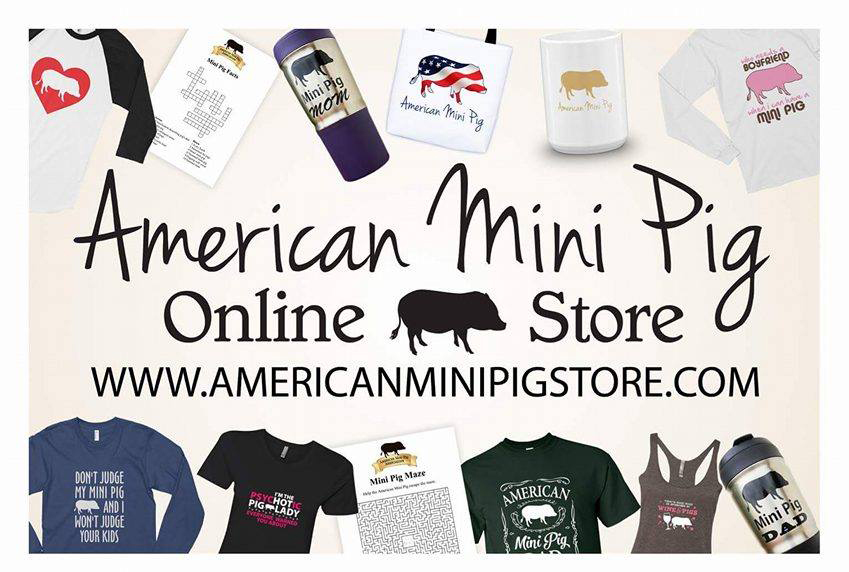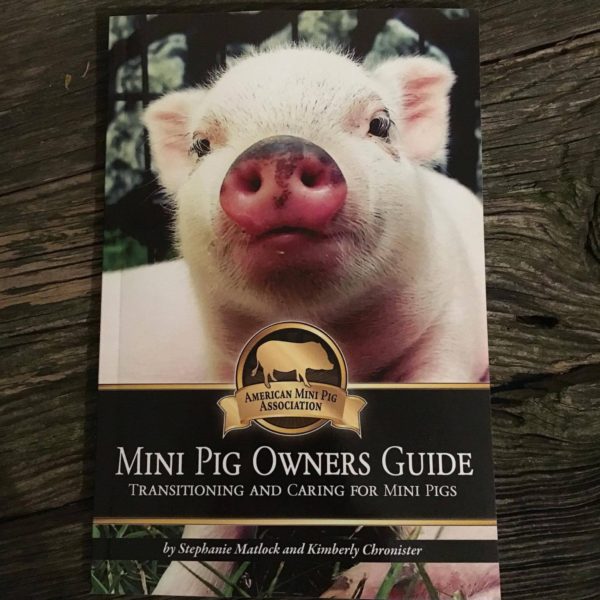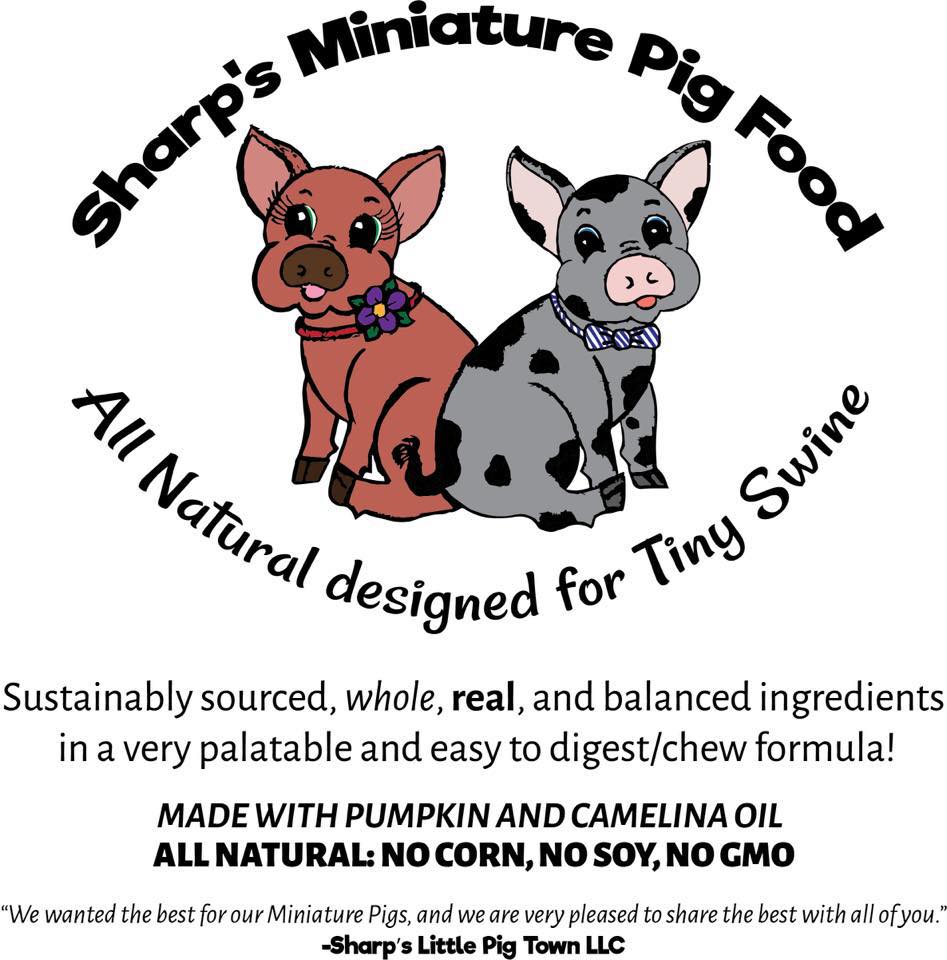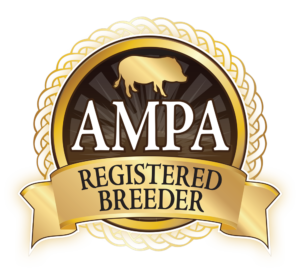The History of Mini Pigs
The idea of having a pig as a pet is a relatively new one, although pigs have been domesticated for thousands of years. Many remember the popularity of the Veitnamese Pot-bellied pigs in the 1980’s. Unfortunately, this breed grew to 150-200 pounds and Americans realized how difficult a pig of that size was to manage. All the while, scientific and medical laboratories had already developed a smaller version of the full sized, 1000 pound pig for their research needs. Pigs are anatomically and physiologically similar to humans. Creating a manageable, smaller sized pig for use in research seemed like a perfect idea. Labs began selective breeding to develop this smaller pig with specific characteristics to benefit their research. Selecting breeds of pigs to combine for their size, color, and growth rates resulted in the Mini Pig.
In 1949, Black Guinea Hogs, Feral boars, and the Piney Rooter of Lousiana became the bases for what would be called the Minnesota Mini Pig. The Ras-n-Lama pigs from Guam were then selected for their Island Dwarfism traits to again reduce the size of the pigs.
The Minnesota Mini Pig was then crossed or bred with Vietnamese Pot-bellied Pigs in Germany, resulting in a spotted pig that had Pot-bellied characteristics.
In 1965, the German Landrace pig was introduced into the breeding to encourage a light colored pig.
Then in Germany in 1969, the breeding combination of 60% Vietnamese Pot-belly, 33% Minnesota Mini Pig, and 7% German Landrace established the breed Gottingen Mini Pig which were eventually exported to the U.S. to aid in the development of the Juliana.
The most common mini breeds used or developed in the U.S. labs were the Hanford, Yucatan, Yucatan Micro (a smaller version of the Yucatan), the Sinclair, the Gottingen, as well as up to 14 other breeds.
But What About The Teacup Pig?
What Is The American Mini Pig?
Author Jonathan Randall
There are many who say the American Mini Pig is the same as a Pot Belly Pig. We find that many who say this lack an understanding of the swine world outside of what they have been told or from their own limited experiences. By taking what we know from research books/documents on biomedical research pigs in the U.S. along with breeder information/knowledge of breeding practices, and a general knowledge of the different build features of many different breeds/breed types of swine, we get a better understanding of what an American Mini Pig truly IS.
From the links found on the “History of the American Mini” page you can see that PBP’s were used in the development of most biomedical research pigs. However the American Mini also has many other breeds “mixed in”. From Landrace hogs and Durocs, too many different breed types of feral hogs. The truth of the matter is, not to many people in the country can say with 100% certainty what their mini pigs really are. There is no genetic test to determine exactly what the genetic makeup of a pig actually is. Currently there is only a parentage test with just a few breeds already on file out of the 100+ recognized breeds/breed types of swine.
Aside from just the documentation regarding biomedical research pigs we also have information on other imported breeds that played a role in the development of the modern American Mini. Such as the Pot Belly Pig breed types imported in the 80’s, the Gottingen from Germany (who’s lineage for the most part actually lies with some of the biomedical research pigs developed here in the states), and the KuneKune.
The first thing you should know about Pot Belly pigs is that they are not a single specific breed. The Pot-Bellied pig, also known as the Chinese, Asian, or Vietnamese Pot Bellied Pig, is a domesticated “breed” of pig that originates from the Southeast Eurasian continent. There are at least 15 local “breed types” that make up the Pot Bellied Pig “breed”. They can only be found in the mountainous regions of Vietnam, China, and Thailand. Many of these “local breed type” pot-bellies can now be found all around the world. While these local types do share some significant build characteristics it has been shown that they are not all that closely related genetically.
Pot-bellied Pigs in the U.S. today can be traced back to a few different imported breed types or “lines”. The Con line, Lea line and Royal line represent most of the foundation stock for pot-bellies in America today.
Keith Connell imported some Pot Bellied Pigs to the U.S. from Canada in 1982 for zoological purposes. Keith named them the “Con” line. At least two other local breed types of Pot Bellied Pig were brought into the U.S. shortly after Keith Connell’s “Con line”. The “Lea Line” imported by Leavitt (white and black markings) and the “Royal Line”, imported by Espberger (mostly white, somewhat larger than the “Lea Line”). By American and European standards all local types of Pot Bellied Pig are relatively small, ranging in weight from 80-300 pounds and 16-32 inches tall. The different imported lines provided a larger gene pool to work with. Giving us a healthier breed type that enables breeders to develop more desirable characteristics such as size, disposition, conformation.
From what is known and what can be seen in the American Mini Pigs of today, they are vastly different from their Asiatic descended cousins/ancestors. Off the bat the first indicator is the variation in coloration. The Asiatic breeds/breed types brought to the U.S. are black, white, or black and white with varying patterns. Only through the introduction of European, American, and various feral types can we account for the wide variations in color that we see in the American Mini Pig. Next we look at build features. Most PBP breed types have a pronounced pot belly and a very visible swayed back. Their hair is also much thinner than the American Mini Pig leaving the skin easily visible through the hair. The majority of American Mini Pigs have a much thicker coat, little to no pot belly and/or swayed back. They also come in every color and pattern possible in swine.
Through cross breeding and selective breeding we were able to get to what we have now. Due to the varied history of these animals we find that build and coloration can vary widely depending on the individual breeders “standards”, as well as the genetic makeup of the individual pig. We can see key build features in our modern American Mini Pigs that also help to link them to both their recorded and unrecorded history. From ear shape and set, coloration, facial structure, and over all build it is possible to make an educated guess as to what the dominant genes could possibly be linked back to. They can share any number of characteristics from their lineage depending on how the genes line up on that individual. That being said these animals do stand apart from any one of the individual breeds/breed types that went into their development.
When the use for biomedical research pigs began to decline the majority of facilities eliminated their programs all together while some continue on to this day. Some of these pigs made it in to the hands of the general public. They were bred and cross bred with any number of available breeds in the US, unchecked for decades. The American Mini Pig could potentially be one of the most genetically diverse breed types of swine in the world. We can see elements of different island feral hogs, Asiatic hogs, European swine, Australian, Russian, and American breeds in our modern American Mini Pigs. Some can very closely resemble any number of other breeds of swine. It all depends on the ratio of the genetics on that individual.
Ultimately, the majority of miniature breeds in the United States are linked to each other in one way or another. We know that Pot Bellied Pigs were used in the development of biomedical research pigs. One of those research breeds known as the Minnesota Mini Pig was shipped to Germany to be used in research facilities. While there, they were crossed with local breeds ultimately resulting in the development of the Gottingen. The Gottingen was then brought to the US and used to help create the Juliana. It is now a fairly common practice to cross Juliana’s and American Mini Pigs. Things have gone full circle with these amazing creatures.
We as an organization recognize that there can be vast similarities between some Pot Bellied Pig breed types, Julianas, Gottingens, as well as many other breeds, with some modern American Mini Pigs. We do not deny that. That being said, as a whole they are now their own unique hybrid that does not fit in to any one of those single breed types “standards”.
Many common labels or nicknames for the American Mini Pig of today include: Teacup, Micro, Super Micro, Nano, Pixie, and Pocket Pig. These nicknames are not considered breeds, but selling or market tools and labels individual breeders place to describe size. These labels or nicknames can be defined differently from breeder to breeder. The American Mini Pig Association hopes that our registry classifications will one day replace the labels and allow breeders to have a universal system of size definitions.

